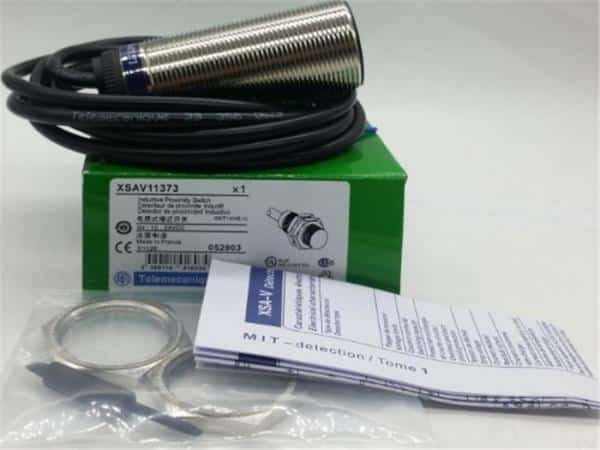A proximity sensor is a device that is used to detect an object’s presence without the need for physical intervention or contact. This is done by the emission of electromagnetic radiation that checks for the changes in the object’s field and the signal. They are primarily used in parking lots, mobile phones, and many other places.
Let us now discuss different types of proximity sensors that have multiple applications.
- Inductive Proximity Sensor
This type of sensor is called inductive due to its detection is based on the principle of inductance. It is designed to use the oscillator circuit to induce an electromagnetic field that helps in detecting metallic objects. The sensor is made up of an inductive loop. When the cable comes out of the sensor it turns red, detects the metal, and the sensor is switched on. The sensor is switched off when the cable goes/ or is out of the way.
- Capacitive Sensor
This sensor is designed to detect metallic and non-metallic objects in varied forms such as liquid, solid, and granulated. It has two conduction plates positioned at the sensing head, thereby operating as an open capacitor. When an object enters into the sensing region, the capacitance of these plates increases to change the oscillator amplitude.
The capacitive sensor fluctuates when the target is present in the area. It will detect all kinds of materials, and thus, it is necessary to keep the sensor away from non-target material to avoid any false trigger.
- Photoelectric Sensor
These sensors are designed in such a way that they can sense targets within 1mm diameter. Such photoelectric sensors can prove to be helpful in solving several industrial sensing tasks and functions. It has a laser diode receiver that detects the emitted light. This receiver can be amplified with the help of an emitter that is used to transmit an infrared light or a visible beam.
- Through-Beam
One of the most reliable types of photoelectric sensors, through-beam sensor are used where an emitter provides a constant beam of light. Sensing happens when an object crosses the beam, breaking it into two beams. These sensors are used in commercial and industrial areas. It is reliable and can prevent unauthorized access or prevent a car from smashing.
- Retro-Reflective
This sensor has the longest photoelectric sensing capability with a sensor monitoring range of up to 10m. Principally, the retro-reflective beam sensor works the same way as through-beam, but the only difference is that the emitter and receiver are located in the same housing in the same direction.
The emitter generates a laser and places it towards the reflector, which repels/deflects the beam back to the receiver. When the light path is either disturbed or occurred, detection happens. While the sensor helps save time and money, reflective objects in the environment, such as cans and mirrors, can result in faulty output and prove to be a challenge for retro-reflective sensors. This is due to the fact that the target object reflects light to trick the receiving sensor that the beam was not disrupted.
- Ultrasonic Sensor
There are components in this type of sensor – transmitter, receiver, and trans receiver. The transmitter converts an electrical signal into an ultrasound and ultrasound into an electrical signal. It is the trans receiver’s job to transmit and receive an ultrasound signal. It is mainly used to measure speed through the water or tank’s fluid level. It is also incredibly useful in handling automated manufacturing processes. The sensor is used for applications that require continuous detection of an object.
Discuss your requirements with an expert service provider to choose the right type of proximity sensor for the appropriate application. It is crucial that you first match your needs, and then find a proper proximity sensor with the help of an expert!
